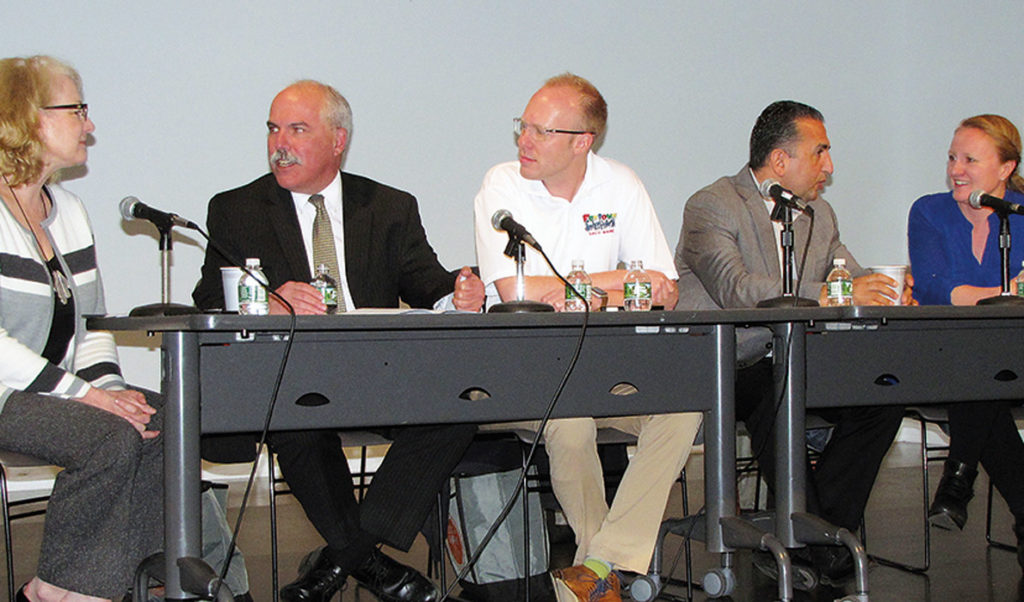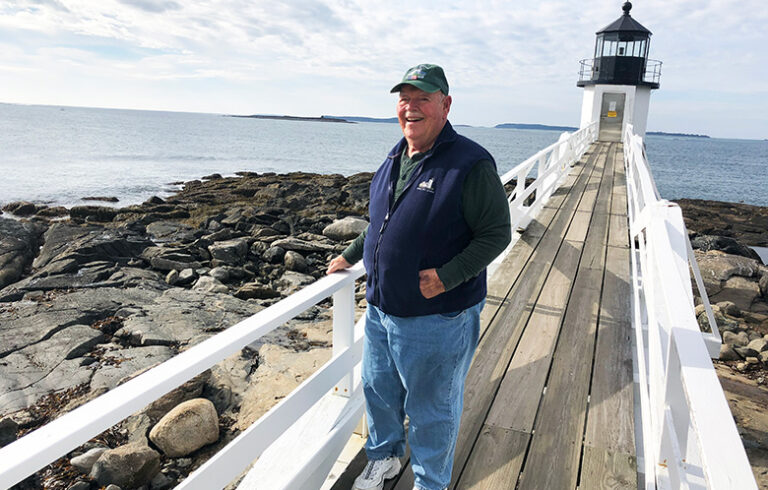As summer arrives, there’s worry in the tourism industry—not about seeing enough customers, but about having enough staff.
At a May 31 breakfast forum hosted by the Portland Press Herald, coastal business owners and managers described the challenges they face this year, which range from a local workforce unable to find housing in the area or transportation to coastal jobs, to a tightening of visas for foreign workers.
Moderator Carol Coultas, the newspaper’s business editor, noted that the unemployment rate in York County is at 3 percent, and Cumberland County’s even lower, which makes finding seasonal workers difficult.
Greg Dugal, a former manager at the Samoset Resort in Rockport and now director of government affairs for the Maine Innkeepers and Maine Restaurant Associations, said he is aware of restaurant owners wary of opening their businesses and hotel owners keeping blocks of rooms closed for lack of workers.
He used Ogunquit as an example. The town has about 1,000 residents, with 2,000 hotel beds and 20,000 restaurant seats.
“Do the math,” Dugal said.
Many Southern Maine seasonal businesses provide housing for their foreign or non-local workers, but that can cost between $2,500 and $5,000 per employee, he said.
Gerard Kiladjian, general manager of the Portland Harbor Hotel and the Inn at Diamond Cove on Great Diamond Island, and of each hotel’s restaurant, can’t fully staff the businesses.
“We are short between 25 and 30 people this season,” he said.
A dozen to 15 housekeepers are now employed at the hotel in the city, he said, with most of those jobs filled by foreign students, mostly from Jamaica.
And the businesses are struggling to keep those they hire on staff, Kiladjian said, estimating only a 60 percent retention rate. The hotels and restaurants are using a temporary employment service to keep jobs filled.
At the island hotel and restaurant, he said, “Every time you get everyone trained, and fully staffed, the season is ending.”
Ed Hodgdon, manager of Funtown Splashtown USA in Saco, said his business hires about 100 teens and young adults each summer, mostly from out of the country through a work visa program. The business owns most of the housing units where staff reside, he said, and two years ago, it bought a hotel that can house about 72 workers.
Kiladjian said it’s difficult to find short-term housing in or near Portland, and when it is available, landlords are reluctant to rent without meeting the tenant, and the workers hesitate to take jobs without confirmed housing.
Jobs at the Inn at Diamond Cove on Great Diamond Island mean a drive to Portland, then a half-hour ferry ride to the island.
“It’s a beautiful ride on a summer day,” he said, “so we try to sell them on that.”
Funtown Splashtown USA uses a van to shuttle local teens from a Walmart parking lot out of town, Hodgdon said. He also observed that local teens don’t seem to want to work full time on their summer breaks, further tightening the labor market.
Using foreign workers here on work visas is increasingly how coastal Maine tourism businesses find staff. But panelists say this year, with the Trump administration’s emphasis on tighter immigration policies, that source of employees has tightened.
“It used to be, if you had people returning year after year, you were exempt under the visa cap,” said the Press Herald’s Coultas.
Dugal elaborated, saying, “There really is no extension.”
The federal cap on work visas nationwide is 66,000, but typically, that number is raised to meet employer demands. Last year, 126,000 work visas were used.
Congress, through its “continuing resolution” that keeps the government funded in the absence of a budget, he explained, typically raises the visa cap. The secretary of the Department of Homeland Security has, in the past, requested the visa cap be raised, but observers don’t expect that from current secretary John Kelly.
In Maine, Dugal said, about 700 work visas have been approved, well below the usual 2,500.
The state’s voter-approved higher minimum wage also is seen as a threat to tourism businesses. The state’s $7.50 per-hour minimum wage was raised to $9 this year, and will be raised to $10 in 2018, and eventually reach $12 by 2020.
Kiladjian said a front-desk clerk at his hotels now earning $11 an hour will want to earn more, since the minimum wage has increased.
The minimum wage does not make sense for seasonal, entry level jobs, Dugal argued, favoring instead a training wage.
“You’re basically training them to be an adult,” he said, referring to Hodgdon’s water park business, where teens learn to arrive on time, follow rules and get along with co-workers.
Another challenge panelists cited was the high school and college schedule which means student workers must leave their jobs in late August, still the peak of tourist season. Efforts to convince university officials to start later have fallen short, they said.
Dugal said labor shortages tend to run in cycles, but this one is different.
“I’ve seen so many of these labor cycles,” he said, and typically, the severe shortages last a year or two.
“We’ve been seeing this thing coming like a freight train for years,” he said, though it was delayed by the Great Recession. The industry must have a hiring strategy, he said, because the state Department of Labor projects the labor pool will shrink through 2024.
“This doesn’t go away.”





